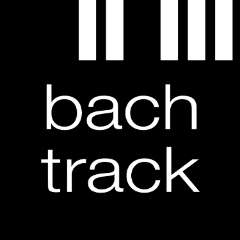Our first prom of the year this evening: we joined a packed house to see a mixed programme from the Hallé, conducted by a very youthful-looking Sir Mark Elder. All four works in the programme are notable compositions, each in their very different styles.
The showpiece of the evening was the ever-popular Bruch violin concerto, played flawlessly by Janine Jansen, supported by brisk and upbeat orchestral playing. Jansen was particularly impressive in blending her fast runs smoothly into the orchestra without a fraction of a rubato. She employs a variety of different tones: most often velvet-smooth, but sometimes attacking the notes more crisply, and always bringing pace and excitement to the piece. The audience were clearly delighted.
If anything connected the programme together, it was a sense of wistfulness, particularly evident in the second movement of the Bruch and the first piece of the programme, George Butterworth's "orchestral rhapsody" based on A.E.Housman's well-loved "A Shropshire Lad". The readings of two of the poems (one before the music, one after) are probably best forgotten, but the first note of the music is magical, swelling gently out of nothingness, and the piece is a wonderfully nostalgic drift through a beloved countryside. Butterworth was killed in 1916 at the Somme by a sniper's bullet, which adds particular poignancy to Housman's consciousness - written many years earlier - of "the lad that will die in their glory and never be old". The Hallé did the music full justice, with sensitive and precise playing, with the gentle opening and the fade into oblivion at the end handled quite beautifully.
The orchestra didn't completely overcome the inevitable difficulty of getting enough dynamic range from the strings in the vast space of the Albert Hall. The sound quality is pretty good - it's just that there isn't enough of it in the loud passages (although it always rather depends on where you're sitting). It was hard for the orchestra to achieve the desired contrast: throughout the evening, the soft passages were always the most convincing.
The wistful, languid memory of an English countryside is also present in the third movement Cavatina of Vaughan Williams' 8th Symphony (both VW and Butterworth use similar violin solos to get the effect). The other movements, however, are anything but nostalgic. The Symphony is not among the more intense of Vaughan Williams's works - in contrast to the Bruch, it's not particularly structured, and you can enjoy the timbre and variety in the music without having to worry too hard about where it's taking you. I particularly enjoyed the bright and quirky scherzo, scored mainly for wind instruments and providing the bassoon with a rare moment in the limelight, and the finale was also good fun, scored with generous use of xylophone, vibraphone, glockenspiel and other percussion ("all the 'phones and 'spiels known to the composer", as VW put it).
The evening closed with Richard Strauss's romp "Till Eulenspiegels lustige Streiche", based on the German mediaeval stories of the folk hero and general mischief-maker who gets into a series of scrapes before ending up on the gallows. The music was played with suitable verve and gusto - it comes across as a sort of rather superior accompaniment to a Tom and Jerry cartoon - and left the audience to finish the evening in an appropriately cheered-up state.
David Karlin 29th July 2008


